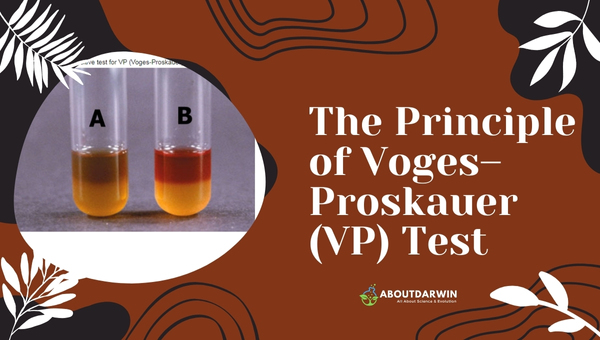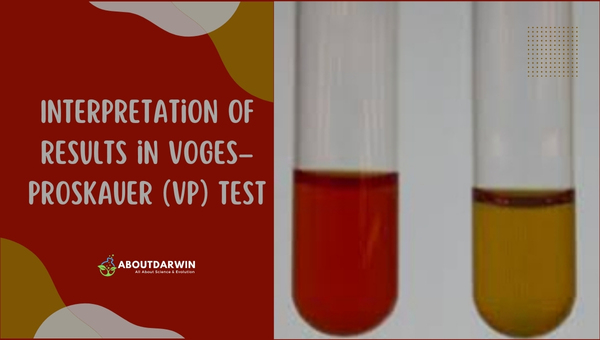Physical Address
304 North Cardinal St.
Dorchester Center, MA 02124
The Voges Proskauer (VP) Test stands as a pivotal procedure in microbiology, essential for distinguishing bacterial species through their metabolic byproducts.
This test identifies the production of acetoin, a key indicator in the fermentation process, revealing insights into bacterial behavior and characteristics. With its roots in over a century of scientific exploration, the VP Test continues to be a cornerstone in clinical settings, aiding in the diagnosis of various infections.
Prepare to uncover the fascinating intricacies behind this test and its significant role in modern microbiological practices.
Contents
The Voges-Proskauer (VP) test is designed to detect the production of acetoin from glucose fermentation. Some fermenting bacteria utilize the butylene glycol pathway, converting glucose into various products, including acetoin, which is a neutral compound.

The VP test is primarily used for differentiating Gram-negative bacilli, especially within the Enterobacteriaceae family. However, it has limitations; false positives can occur if reagents are not added in the correct order or if over-incubation takes place.
Also Read: Distinguishing S. pneumoniae and Viridans Streptococci
The Voges-Proskauer (VP) test is a biochemical assay used to identify microorganisms capable of fermenting glucose and producing acetoin, a neutral end product.
This test is particularly useful for differentiating between certain bacterial species, especially within the Enterobacteriaceae family. The reagents used in the VP test are crucial for detecting the presence of acetoin, which is oxidized to diacetyl in the presence of alpha-naphthol and potassium hydroxide.
The development of a red color indicates a positive result, while no color change suggests a negative result.
Voges-Proskauer Reagent A (Barritt’s Reagent A):
Voges-Proskauer Reagent B (Barritt’s Reagent B):
Culture Media:
These reagents must be added in the correct order and proportions to ensure accurate results in the Voges-Proskauer test.
Also Read: Unlock DNA Discoveries: Free DNA Upload Websites Guide
Conducting the VP Test may appear complex, but with clear instructions and a careful hand, it becomes a manageable task. I’m here to break down that exact process for you.
Here’s a simple guide to help you understand how the Voges-Proskauer test is executed. Please note that this test requires a professional setting and cannot be typically performed at home.
While performing these steps, individuals must follow safety precautions due to potential hazards associated with handling chemical substances like alpha-naphthol and potassium hydroxide:
These steps provides not only an appreciation for laboratory techniques but also highlights how complex processes can be interpreted efficiently through procedural applications like the Voges-Proskauer Test.
Also Read: Unlock Your Roots: Explore Free Genealogy Websites Today
The Voges–Proskauer (VP) test is a crucial biochemical test used in microbiology to determine whether a bacterial organism can produce acetoin from glucose fermentation. This test is part of the IMViC series, which helps differentiate enteric bacteria.

The interpretation of the results is vital for identifying specific bacterial species and understanding their metabolic pathways. Here, we explore the principles, procedures, and interpretations associated with the VP test.
Positive Reaction: A pink-red color indicates a positive result, suggesting that the organism produces acetoin.
Common positive organisms include:
Negative Reaction: A lack of pink-red color indicates a negative result, with examples including:
A copper color may also appear, which should be interpreted as negative or indicative of a weak positive reaction.
This comprehensive understanding of the VP test is essential for microbiologists in accurately identifying bacterial species based on their metabolic capabilities.
Also Read: Sanborn Fire Insurance Maps: A Comprehensive Guide
The VP test is typically used in clinical settings to differentiate between Enterobacteriaceae and other gram-negative rods by detecting the production of acetoin – a fermentation product.
No, this test requires specific reagents, technical knowledge, and sterile laboratory conditions which aren’t generally available at home.
Potential errors during testing can include incorrect preparation or application of reagents, contamination of samples, or misinterpretation of results due to lack of expertise.
The VP Test offers high accuracy when performed under appropriate laboratory conditions by trained personnel; however, it’s always complemented with other tests for confirmatory diagnosis.
As with any laboratory test involving chemicals and biological samples, appropriate safety measures should be followed to prevent exposure risk.
Voges Proskauer is a significant test in microbiology, primarily used to identify certain bacteria, particularly Enterobacter and Klebsiella species. By detecting the presence of acetoin in a culture, this test plays a crucial role in differentiating between various microorganisms.
The results of the Voges Proskauer test, when interpreted alongside other biochemical tests, provide valuable insights into microbial identification and classification.
This method not only enhances our understanding of bacterial behavior but also aids in clinical diagnostics, ensuring effective treatment strategies in healthcare settings.